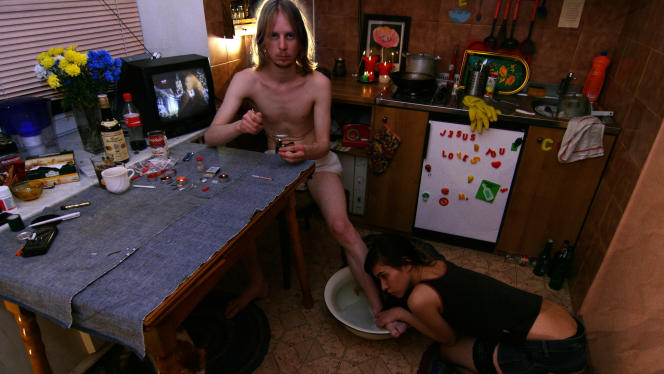THE OPINION OF THE “WORLD” – NOT TO BE MISSED
Before How to Save a Dead Friend, first of all, everyone will remember what adolescence means: dark romanticism, dazzling solitude which sharpens in contact with the works, a handful of friends for life and death who protect us from the assaults of a world indecipherable. And to accompany this restless age, the icy neurasthenia of the songs of Joy Division and the furia of Kurt Cobain remain unsurpassed heights. We are moved to find this continent intact in this first feature film by Russian director Marusya Syroechkovskaya, which is released in theaters after a long life in festivals where it has won numerous awards.
The film opens with candid footage of a snowy funeral of a friend; We are in 2016. Flashback to the early 2000s, when, at 16, Marusya promised herself that this would be the last year of her life. A meeting prevents him in extremis: Kimi, a pretty blond teenager. These two recognize each other immediately, become friends, lovers. As many times as necessary, Kimi will fish Marusya from the chasms.
We are always surprised to discover filmmakers in the making being seized, so early, by a “filmic impulse”, by the need to film as one breathes – A camera instead of the heart, said the magnificent title of a book of interviews with Philippe Garrel (Admiranda, 1992). For twelve years, without a pre-established plan, the young woman documented her daily life in a bar of buildings in the suburbs of Moscow. In a cramped apartment, she and her lover create a breathable intimacy: they get married, adopt cats, take drugs together; it feels like a very real remake of Panic in Needle Park (Jerry Schatzberg, 1971).
Lack of horizon
The painting of their life together becomes that, generational, of a post-Soviet youth who only knew social misery, the absence of horizon under the autocratic regime of Vladimir Putin. It’s love that saves these two, makes them survivors, while the list of dead friends, suicides, never stops getting longer. On her editing table, the director stirs up the images of her life, injects into them the energy of despair and the retrospective irony of her off-duty commentary. “They say that Russia is for the Russians. No, Russia is for sad people. » Here and there, the state of Russia is told in a handful of archives: a demonstration for the release of political prisoners, a television on to the end of the year greetings from the president. No more is needed.
You have 28.42% of this article left to read. The following is for subscribers only.
